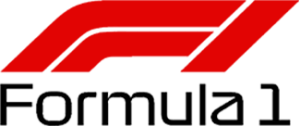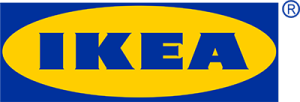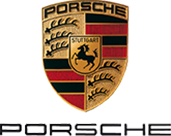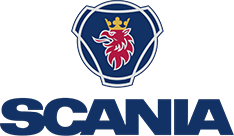Lorem ipsum dolor sit amet, consectetur adipiscing elit, sed do eiusmod tempor incididunt ut labore et dolore magna aliqua. Ut enim ad minim veniam, quis nostrud exercitation ullamco laboris nisi ut aliquip ex ea commodo consequat. Duis aute irure dolor in reprehenderit in voluptate velit esse cillum dolore eu fugiat nulla pariatur.
A pantograph mechanism is mainly still used in North America. A pantograph consists of a scissor mechanism where the fork carriage on which the standard forks of the lift truck are mounted moves forward as a whole. This requires a heavier construction with significantly more moving parts and more components than with telescopic forks where only the outer tube moves forward and/or backward.
Both reach systems can move a similar amount of weight (load). In other words telescopic forks like a scissor reach can both put away, say, 1200 kg. Both reach systems are not limitation but the forklift on which they are mounted. The heavier the forklift, read counterweight, the more weight can be moved forward.
As a structure gets longer with a load (weight) on it, it will deflect more and more. This mechanical fact also counts for telescopic forks and a pantograph. The deflection of both systems can be compensated by the tilting function of the forklift.
In almost all cases, a pantograph is sold together with the truck as a package from the manufacturer. The telescopic forklift forks, on the other hand, can be assembled fairly easily after the forklift has been purchased due to the fact that it is less complex. A comparison is therefore difficult to make but if both reach systems are bought as a stand-alone unit then telescopic forks are considerably cheaper, if only, when you compare the weight of steel and the difference in parts and complexity of the structures.
No, that is not necessary and not relevant at all. The same mast of the standard forklift is used because the load on the fork carriage/mast remains the same. As more weight needs to be placed forward, the weight that is moved forward will decrease proportionally compared to the original capacity.
If you analyze the number of parts in a set of ReachForks compared to the number of parts in a double pantograph, you’ll find that the pantograph has significantly more parts. This will result in higher maintenance costs. Consider, for instance, the numerous hinge components in a pantograph, which are completely absent in ReachForks. Additionally, all cylinders (with their seals) are integrated into the base forks (inner forks) of the ReachForks and cannot be damaged by external factors.
The ability to lift two pallets with extendable forklift forks depends on the dimensions of the pallets. If one or two Euro pallets need to be handled from the long side, ReachForks, extending from 1000 mm to 1600 mm, could be chosen.
Within the KOOI® ReachForks range, we produce specific models for various applications. For cross-docking, where the primary function of the reach forks is the extension of the forks, we have designed the so-called “Extensions-Range.” In this model, the ReachForks are designed so that the outer sleeves cannot get caught on any cross boards on the underside of the pallet.
The hydraulically extendable forks make it possible to remove one or two pallets at a time from the truck, including non-standard long pallets. This increases unloading efficiency by approximately 20%.
The KOOI® ReachForks can be extended to place one or two pallets at a time into a truck, improving efficiency by up to 37%. This is because the pallets can be optimally grouped and placed directly behind each other in the truck. This results in fewer unnecessary Cross-docking movements and increased overall efficiency in logistics processes.
In most cases, add-on sleeves are unnecessary because both hydraulic and manual KOOI® ReachForks can be for example, extend from 1200 mm to 2000 mm (47.2″ to 78.7″).
Yes, energy consumption in Cross-docking can be reduced by up to 20% because the same forklift can handle two pallets at once, reducing the distance it needs to travel.
Slightly yes, telescopic forks are approximately 5% heavier than standard forklift forks for Euro Pallet applications. A set of reach forks weighs around 90 kg, while a set of standard forks with a length of 1200 mm weighs 86 kg.
KOOI ReachForks are designed to handle a variety of weights, but the specific limit depends on the model. Generally, they can handle loads up to 1,500 kg. which is the maximum carrying weight of the EPAL pallets.
Ensure the pallet is centered and the forks are fully inserted. The load should be evenly distributed across both forks to prevent tilting and potential damage.
KOOI ReachForks are compatible with most standard forklift models. However, it’s important to verify compatibility with your specific forklift before use.
Regularly inspect the forks for any signs of wear or damage. Ensure the extension mechanisms are lubricated and functioning smoothly. Follow the maintenance guidelines provided by the manufacturer.
Use the tilt indicator to ensure the forks are level. Avoid sudden movements and ensure the forks are properly aligned with the pallet slots before lifting.
The Bluetooth tilt indicator ensures the forks are level, reducing the risk of tilting and potential damage to the pallets. It provides real-time feedback to the operator.
Hydraulic EURO-Pallet extensions require an additional hydraulic function. Often this is already standard on a forklift. Since telescopic forks are almost as heavy as standard forklift forks, no additional heavier forklift is necessary.
No, for those companies that do not need to extend forks regularly daily, Meijer Handling Solutions also supplies manually extendable forklift forks.
Telescopic forklifts are indeed slightly thicker than standard forklifts, but their thickness depends most on capacity. We already supply telescopic forks with a thickness of 40 mm and a capacity of 1700 kg / 600 mm.
A pantograph mechanism is mainly still used in North America. A pantograph consists of a scissor mechanism where the fork carriage on which the standard forks of the lift truck are mounted moves forward as a whole. This requires a heavier construction with significantly more moving parts and more components than with telescopic forks where only the outer tube moves forward and/or backward.
Both reach systems can move a similar amount of weight (load). In other words telescopic forks like a scissor reach can both put away, say, 1200 kg. Both reach systems are not limitation but the forklift on which they are mounted. The heavier the forklift, read counterweight, the more weight can be moved forward.
As a structure gets longer with a load (weight) on it, it will deflect more and more. This mechanical fact also counts for telescopic forks and a pantograph. The deflection of both systems can be compensated by the tilting function of the forklift.
In almost all cases, a pantograph is sold together with the truck as a package from the manufacturer. The telescopic forklift forks, on the other hand, can be assembled fairly easily after the forklift has been purchased due to the fact that it is less complex. A comparison is therefore difficult to make but if both reach systems are bought as a stand-alone unit then telescopic forks are considerably cheaper, if only, when you compare the weight of steel and the difference in parts and complexity of the structures.
No, that is not necessary and not relevant at all. The same mast of the standard forklift is used because the load on the fork carriage/mast remains the same. As more weight needs to be placed forward, the weight that is moved forward will decrease proportionally compared to the original capacity.
If you analyze the number of parts in a set of ReachForks compared to the number of parts in a double pantograph, you’ll find that the pantograph has significantly more parts. This will result in higher maintenance costs. Consider, for instance, the numerous hinge components in a pantograph, which are completely absent in ReachForks. Additionally, all cylinders (with their seals) are integrated into the base forks (inner forks) of the ReachForks and cannot be damaged by external factors.
The ability to lift two pallets with extendable forklift forks depends on the dimensions of the pallets. If one or two Euro pallets need to be handled from the long side, ReachForks, extending from 1000 mm to 1600 mm, could be chosen.
Within the KOOI® ReachForks range, we produce specific models for various applications. For cross-docking, where the primary function of the reach forks is the extension of the forks, we have designed the so-called “Extensions-Range.” In this model, the ReachForks are designed so that the outer sleeves cannot get caught on any cross boards on the underside of the pallet.
The hydraulically extendable forks make it possible to remove one or two pallets at a time from the truck, including non-standard long pallets. This increases unloading efficiency by approximately 20%.
The KOOI® ReachForks can be extended to place one or two pallets at a time into a truck, improving efficiency by up to 37%. This is because the pallets can be optimally grouped and placed directly behind each other in the truck. This results in fewer unnecessary Cross-docking movements and increased overall efficiency in logistics processes.
In most cases, add-on sleeves are unnecessary because both hydraulic and manual KOOI® ReachForks can be for example, extend from 1200 mm to 2000 mm (47.2″ to 78.7″).
Yes, energy consumption in Cross-docking can be reduced by up to 20% because the same forklift can handle two pallets at once, reducing the distance it needs to travel.
Slightly yes, telescopic forks are approximately 5% heavier than standard forklift forks for Euro Pallet applications. A set of reach forks weighs around 90 kg, while a set of standard forks with a length of 1200 mm weighs 86 kg.
KOOI ReachForks are designed to handle a variety of weights, but the specific limit depends on the model. Generally, they can handle loads up to 1,500 kg. which is the maximum carrying weight of the EPAL pallets.
Ensure the pallet is centered and the forks are fully inserted. The load should be evenly distributed across both forks to prevent tilting and potential damage.
KOOI ReachForks are compatible with most standard forklift models. However, it’s important to verify compatibility with your specific forklift before use.
Regularly inspect the forks for any signs of wear or damage. Ensure the extension mechanisms are lubricated and functioning smoothly. Follow the maintenance guidelines provided by the manufacturer.
Use the tilt indicator to ensure the forks are level. Avoid sudden movements and ensure the forks are properly aligned with the pallet slots before lifting.
The Bluetooth tilt indicator ensures the forks are level, reducing the risk of tilting and potential damage to the pallets. It provides real-time feedback to the operator.
Hydraulic EURO-Pallet extensions require an additional hydraulic function. Often this is already standard on a forklift. Since telescopic forks are almost as heavy as standard forklift forks, no additional heavier forklift is necessary.
No, for those companies that do not need to extend forks regularly daily, Meijer Handling Solutions also supplies manually extendable forklift forks.
Telescopic forklifts are indeed slightly thicker than standard forklifts, but their thickness depends most on capacity. We already supply telescopic forks with a thickness of 40 mm and a capacity of 1700 kg / 600 mm.














